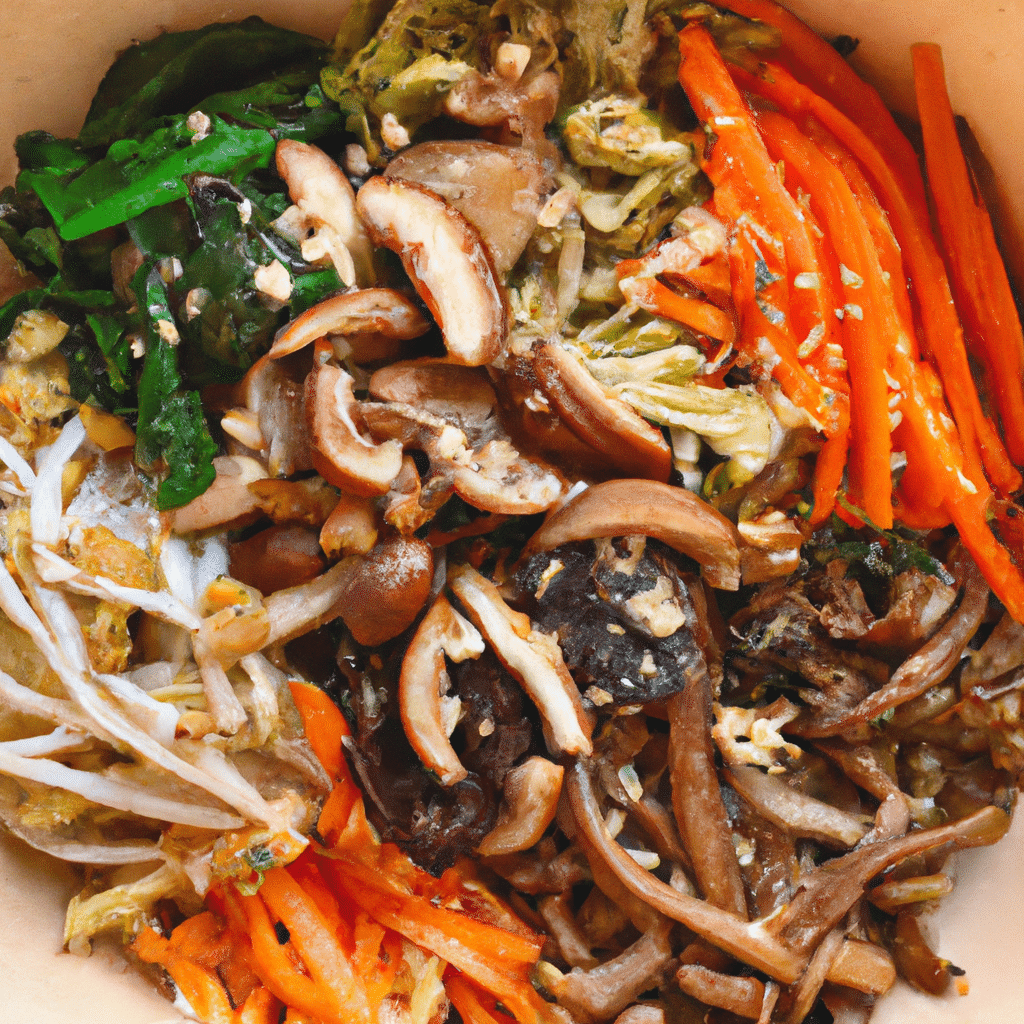Welcome to our comprehensive guide on how to elevate your traditional bibimbap rice bowl with a tangy twist of blue cheese! In this article, we will delve into the origins of bibimbap, explore the unique flavors of blue cheese, and provide you with a step-by-step recipe to create a mouthwatering fusion dish that will leave your taste buds craving for more. So, let’s dive right in!

1. The Origins of Bibimbap
Bibimbap, a popular Korean dish, translates to “mixed rice” in English. It is a harmonious blend of various ingredients, flavors, and textures served in a bowl with a bed of steamed rice as the base. Traditionally, bibimbap consists of seasoned vegetables, marinated meat, a fried egg, and a spicy chili pepper paste called gochujang. The dish is visually stunning with its vibrant colors and is known for its balanced and wholesome nature.
2. The Tangy Twist of Blue Cheese
Blue cheese, known for its distinct flavor and pungent aroma, adds a tangy twist to any dish it graces. Made from cow, sheep, or goat milk, blue cheese is characterized by the blue veins running through it, which are a result of the mold Penicillium. It has a creamy texture and a flavor profile that ranges from mild and buttery to bold and tangy. The addition of blue cheese to bibimbap brings a unique, savory element that complements the traditional ingredients perfectly.
3. Creating the Tangy Blue Cheese Bibimbap
Now that we understand the essence of bibimbap and the tangy twist of blue cheese, let’s dive into the step-by-step process of creating this delectable fusion dish.
Step 1: Gather Your Ingredients
To create the tangy blue cheese bibimbap, you will need the following ingredients:
- Cooked rice
- Assorted vegetables (carrots, spinach, mushrooms, bean sprouts, etc.)
- Marinated meat (beef, chicken, or tofu for a vegetarian option)
- Blue cheese crumbles
- Gochujang (Korean chili pepper paste)
- Sesame oil
- Soy sauce
- Garlic
- Sesame seeds
Step 2: Prepare the Vegetables
Start by washing and preparing your vegetables. Julienne the carrots, blanch the spinach, slice the mushrooms, and blanch the bean sprouts. Each vegetable should be cooked separately to retain its individual flavors and textures.
Step 3: Marinate the Meat
If you’re using meat, marinate it with a combination of soy sauce, garlic, and sesame oil. Allow the meat to marinate for at least 30 minutes to enhance its flavor.
Step 4: Cook the Rice
Ensure that your rice is cooked to perfection, with each grain separate and fluffy. You can use a rice cooker or stovetop method according to your preference.
Step 5: Sauté the Vegetables and Meat
In a hot pan, sauté the vegetables and meat separately. Cook each ingredient until they are tender and flavorful. Remember to season them with a dash of soy sauce, garlic, and sesame oil for an authentic Korean taste.
Step 6: Assemble and Mix
Once all the components are ready, it’s time to assemble your tangy blue cheese bibimbap. Start by placing a generous portion of rice in a bowl. Arrange the sautéed vegetables and meat on top of the rice. Add a dollop of gochujang and sprinkle blue cheese crumbles over the dish. Finally, mix everything together vigorously to allow the flavors to meld.
Step 7: Garnish and Enjoy
To add a finishing touch, garnish your bibimbap with a sprinkle of sesame seeds. The nutty aroma of sesame seeds will enhance the overall flavor of the dish. Now, grab your chopsticks or a fork, and savor the explosion of flavors in every bite.
Conclusion
In this article, we have explored the origins of bibimbap, the tangy twist of blue cheese, and provided you with a detailed recipe to create a tantalizing fusion dish. By combining the traditional elements of bibimbap with the bold flavors of blue cheese, you can elevate your dining experience to new heights. So, why not embark on this culinary adventure and indulge in the delightful marriage of bibimbap and blue cheese? Prepare to tantalize your taste buds and impress your guests with this unique and flavorful dish. Bon appétit!
